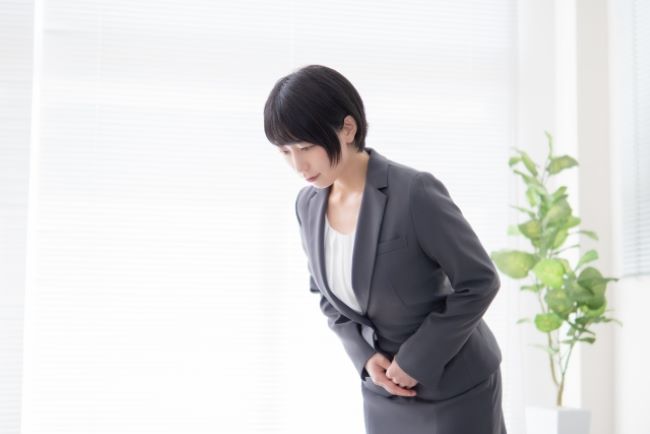
お
どのお
Bowing
In other countries, people often look someone in the eyes, smile, shake hands, or hug. In the UK, men bow while women curtsy. In Japan, people bow, regardless of gender. There are several types of bowing, used in different situations towards different people. Today, I’d like to introduce three types of bowing that people use in the business community.
Eshaku
First, there’s Eshaku. This bow indicates that you acknowledge the person when you see them. The bow itself consists of lowering your head 15 degrees. People use this type of bow when they pass an acquaintance in town or at work without stopping. In some cases, it isn’t necessary to turn your body toward the other person if you know who the other person is.
Keirei
Keirei is a bow of respect and consists of stopping to bow your head down to about 30 degrees. When you meet a customer, use the Keirei bow. If there are many people, you may have to use the Keirei bow several times as bowing is only done between two people.
Saikeirei
The most respectful bow is called the “Saikeirei”. People use this type of bow to either apologize or show respect to the dead. To use this bow, you must lower your head to 45 degrees.
As with any bow, you don’t look the other person in the eyes, like in the movie, Karate Kid. The head and back should be in a straight line, and the entire body should be bent from the waist down. Naturally, your eyes will look downward rather than toward the other person’s face or eyes. Bowing while looking the other person in the eye doesn’t convey courtesy. Instead, it suggests that you’re inviting the other person to a fight, so please be careful.
In the U.S, you may smile at someone if your eyes meet someone else’s as they come from the opposite direction. But in Japan, it’s not customary to smile at strangers. And when walking, it’s common to avoid eye contact with oncoming pedestrians. If you walk around smiling in Japan, people might think you’re a strange person.
sign up for the Japanese-Online Newsletter
__..-・**・-..__..-・**・-.._ あいうえお かきくけこ さしすせそ たちつてと なにぬねの はひふへほ まみむめも やいゆえよ らりるれろ わゐうゑを ん __..-・**・-..__..-・**・-.._
#JapaneseOnline #LearningJapanese #FreeJapaneseLessons #JapaneseVideoLearning #JapaneseAnime #Anime #JapaneseFood #Bloguru
